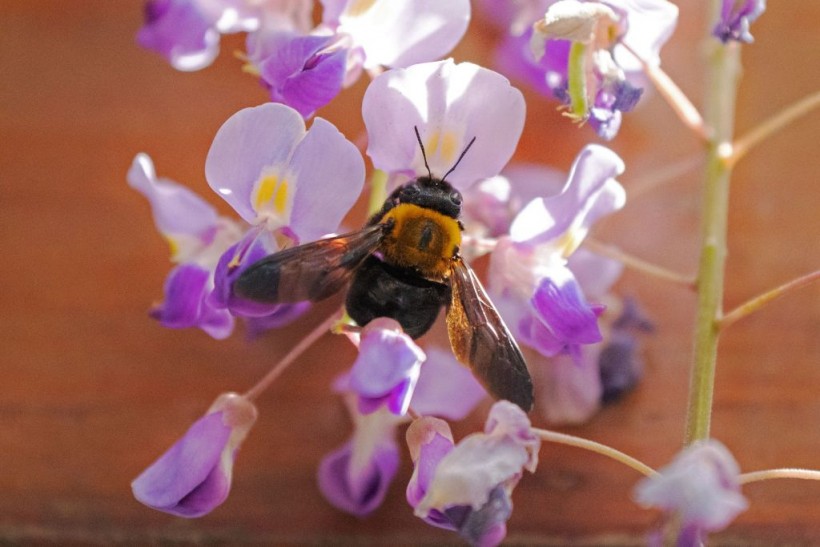Apple is one of the most valuable and widely consumed fruits in the world, but its production depends on the availability and diversity of pollinators, especially bees.
A new study by Western Sydney University, in partnership with Hort Innovation, has revealed that apple pollination in Australia is largely reliant on two bee species, one native and one introduced and that this poses a potential risk for the future of the industry.
The Role of Native and non-native Bees in apple pollination
 (Photo : PHILIP FONG/AFP via Getty Images)
(Photo : PHILIP FONG/AFP via Getty Images)

The study, led by Dr. Simon Tierney from the Hawkesbury Institute for the Environment, explored the pollination services provided by native and non-native bees for apple cultivation in Australia, as per Phys.org.
The researchers observed the foraging behavior of over 69,000 invertebrate flower visitors to orchards for three years in the Blue Mountains and Central West regions of New South Wales and assessed their effectiveness in transferring pollen between apple flowers
The researchers found that two bee species accounted for 90% of the effective pollination visits: the native stingless bee (Tetragonula carbonaria) and the introduced western honey bee (Apis mellifera).
The native stingless bee was more abundant and efficient than the honey bee, but its distribution was limited by climatic factors and proximity to native forests.
The honey bee was more widespread and resilient, but its performance was affected by competition and colony health
The researchers also found that apple pollination in Australia was influenced by the compatibility between different apple varieties. Apple trees need suitable pollinator varieties to bear fruits, as they are mostly self-incompatible and require cross-pollination.
Apple varieties are grouped according to when they flower, from group A (the earliest) to group D (the latest).
Fruiting of every variety can be improved by planting another apple that is a compatible cross-pollinator within the same or adjacent flowering group.
Alternatively, self-pollinating varieties or multi-grafted trees can be used to ensure adequate pollination.
Also Read: Bees Observed 'Ejaculating' Themselves to Death Due to Severe Heat
The Implications for apple production and Conservation
The study is the first to provide a comprehensive assessment of pollination in apple crops in Australia and has international relevance as apples are the 10th most valuable global crop, as per Daylilies in Australia.
The study shows that apple pollination in Australia is dependent on a narrow range of bee species, which could pose a threat to the industry if their populations decline due to environmental or anthropogenic factors
Dr. Tierney said that understanding the natural history, behaviour and family tree of bees is crucial for understanding pollination services, as these animals co-evolved with flowering plants that represent a large part of the human diet.
He said that apple production in Australia faces the potential vulnerability of being reliant on a single species - the honey bee - which is susceptible to invasive parasites and diseases
He also said that planting diverse reforestation stock near orchards could help increase the abundance and diversity of native bees, which could enhance pollination services and support healthy ecosystems.
He said that diversity begets diversity and that planting diverse reforestation stock is critically important for conserving the wealth of pollinators and predators that contribute to agricultural systems and serve as a food source for bird and wildlife populations
The researchers hope that their findings can inform management practices that promote sustainable apple production and biodiversity conservation in Australia and beyond.
Related article: Comparison of Honey Bee, Bumble Bee Preferences for Flower Patches: Implications for Conservation, Agriculture
© 2024 NatureWorldNews.com All rights reserved. Do not reproduce without permission.




![Roundworms with Short Memories 'Stop Forgetting' When Frozen or Given Lithium [Study]](https://1471793142.rsc.cdn77.org/data/thumbs/full/70295/280/157/50/40/roundworms-with-short-memories-stop-forgetting-when-frozen-or-given-lithium-study.jpg)
